How do we, as customers, decide if we like a brand or not? If it were a math equation, the answer would be to take the average of our overall experience. As it turns out, the decision-making process behind the verdict isn’t straightforward. Behavioral science principles suggest that people form impressions of a service based on the most intense moments of the journey: the moments of truth.
What exactly are customer journey’s moments of truth, and how do you recognize them in your case? Why do you need to identify them in the first place, and how can that knowledge bring you closer to your business goals? Let’s get to the bottom of this, with mapping tips and examples to better understand the concept.
Contents
What are moments of truth?
Moments of truth represent the points in the journey where a key event occurs, and the customer forms an opinion about the brand. In simple words, these are the touchpoints where clients either fall in love with your product or leave. Quality, service, value for money, consistency, and personalization are all pieces of that puzzle.
Have you ever had the most delicious hot dog at a godforsaken gas station? Or, on the contrary, was disappointed by an over-salted dish at a fancy brasserie? Of course, the expectations from the second venue are higher. The point is that product quality often overshadows other aspects like atmosphere, delivery speed, or bad reviews on TripAdvisor. You end up thinking you’d have another hot dog any day, though you’d never return to that brasserie.
Now, let’s imagine you order a pizza delivery from an Italian place. The menu has lots of choices, the pictures are mouth-watering, the callback service is flawless, and the delivery is lightning-speed. The moment of truth arrives when you taste the pizza. At that point, you either fall in love with the restaurant or not.
Or consider the service: even if the pizza is tasty when it comes out of the oven, it’s going to be less delicious when the crust dries off and the cheese cools down. The moment of truth will still happen with the first bite. So if the delivery is 45 minutes late, you probably won’t give the restaurant another chance, while the product itself — the pizza — is not at fault.
As for visualizing the customer journey moments of truth, journey mappers assign those to stages or substages the customer goes through. Although they’re called ‘moments’, it’s not always a single, short episode. It can be a longer process, like the delivery in the Italian restaurant example. Any interaction that can change the customer’s mind, for better or for worse, can potentially be a moment of truth.
All customer journeys have moments of truth, no matter whether they are specifically highlighted on the map. For instance, when a person is feeling strong emotions like rage, terror, or admiration, the experience graph will have a wider range. Peak highs and lows are tell-tale signs of a moment of truth.
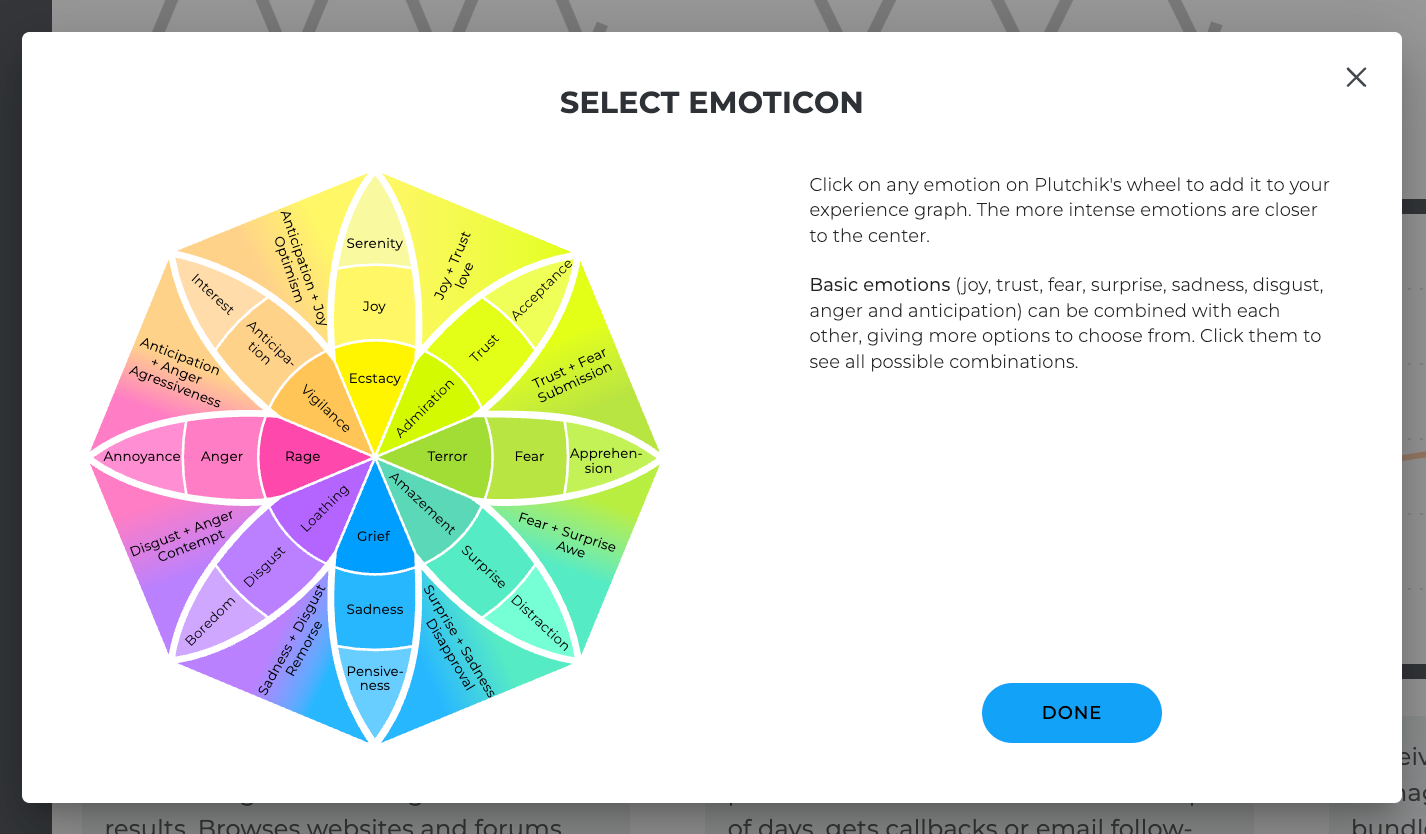
Why are moments of truth important?
Moments of truth greatly influence the overall customer experience, as they hold the power to shape our impression of the brand. Negative moments drive clients off, while positive ones contribute to customer loyalty and brand advocacy.
Positive moments of truth can set your company apart from competitors, creating a first-rate customer experience. And from a business perspective, that means higher customer satisfaction levels, more repeat purchases and referrals, and a potential increase in revenue.
When you make a habit of tracking moments of truth and visualizing (like we did for a cinema visitor journey) those in the journey maps, you can:
- Find the weakest part of the customer journey and fix it;
- Multiply positive moments for a journey that’s too average or uneventful;
- Develop instructions on handling moments of truth for the front-line staff;
- Identify the moments where your service really shines, and reinforce those or reuse them across other stages.
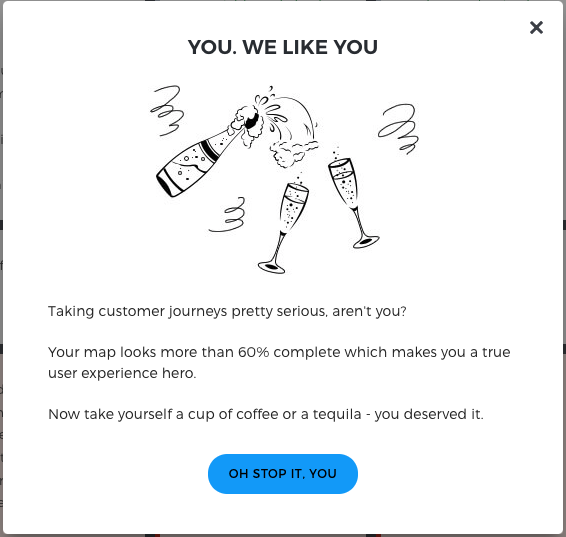
Moments of truth: a classification
In general, moments of truth fall into two major categories:
- Positive moments — moments of glory;
- Negative moments — moments of pain.
Let’s review both types in detail, along with ways to encourage the positives and alleviate the negatives.
Moments of glory
Moments of glory happen when we exceed customer expectations throughout an interaction where they have difficulties, need help or encouragement, or simply would welcome something ‘extra’. These positive moments can occur at various stages of the journey, though the intensity will vary.
Let’s consider a few examples of moments of glory from diverse business domains:
- A discount coupon on an e-commerce website through the ‘First visit’ stage (see the e-commerce journey map templates in our library);
- A drink or a compliment from the chef at a restaurant on the ‘Waiting for the order’ stage;
- A proactive call from a support agent asking if you have any suggestions for the software during the 'Renewal' stage.
- An achievement banner displayed on an online learning platform during the 'Product' stage.

All moments of glory have one thing in common: a match with customer needs and motivations. What matters to one person might not be as important to another. That’s where creating personas can help, as you will learn more about the triggers the audience responds to.
Moments of pain
Moments of pain are the customer’s miserable moments. That’s when the product or service disappoints them, they don’t feel heard, or are left without support in resolving a problem. Similar to moments of glory, moments of pain can occur anywhere along the journey and often make it shorter.
Some examples of moments of pain to better understand the concept:
- A customer leaves a quote request for a company during the ‘Research’ stage and never receives a reply;
- A flower delivery comes too early or too late, ruining the birthday surprise;
- Two patients visit a doctor at the same time due to a glitch on the ‘Schedule a visit’ stage, and one of them has to go home;
- A support agent is being rude to the client who has a service issue at the ‘Setup’ stage;
- A customer’s credit card gets charged even though the subscription for an online service has been discontinued.
From your side of things, moments of pain can indicate a gap in customer experience. Sometimes the service itself is good, though there is a lack of coordination among departments. A great way to reveal these journey breakdowns is to make a service blueprint and link each moment of pain with a flaw on the organizational level.

Discovering moments of pain in a customer’s journey is not necessarily a bad thing. That information can help smooth out a negative experience and prevent customer churn. Showing empathy and acknowledging the problem exists can be enough to get through a moment of pain.
Four discrete moments of truth
There is also a 4-point classification proposed by customer experience author Brian Solis. It's based on the chronological order of how moments of truth appear in the customer journey:
- 0 moments of truth. A person searches for information online and forms the first impression of a brand.
- The first moment of truth. The customer encounters the product or experiences the service for the first time and forms an opinion about it.
- The second moment of truth. The subsequent ‘collection’ of moments that incorporate your customers’ senses: what they feel, see, hear, touch, and smell.
- The ultimate moment of truth. The customer is ready to share an opinion about a brand, typically by publishing content such as a social media post or public review.
This in-depth classification can be taken into account when identifying moments of truth at each stage of a customer journey map.
Сustomer journey mapping: moments of truth and how to identify those
- Hold a team meeting with the customer-facing departments. These specialists generally understand what motivates and frustrates clients through customer interactions, along with the highs and lows of current emotional journeys.
- Explore the data you have. Support queries, contact center logs, call transcripts, survey results, online reviews: any kind of customer feedback you collect. Chances are, the clients have already identified the actual moment of pain or glory.
- Collect enough research data. You can send out an email survey asking customers to describe the moments when they feel excited or disappointed. Customer interviews and other user research methods, such as focus groups, diary studies, observational sessions, etc., will do the job.
- If a project is still in the early stages of development, it's a good idea to review your competitors. You can try the service as a customer. This will help identify key moments of truth and offer insights on how to address them in the service moving forward.
- If you're seeking a comprehensive approach to identifying moments of truth, consider involving your team in a project review process. Gathering insights from customer-facing departments and analyzing data, including support queries, contact center logs, and customer feedback can uncover key moments of pain and glory in the customer journey. Additionally, conducting user research and examining competitor experiences can provide valuable insights for identifying and addressing moments of truth in your service.
How to highlight moments of truth in UXPressia
At this point, you’re probably wondering how to add moments of truth to a journey map at UXPressia. Regardless of your next options, you can use the journey map legend to share the approach with the whole team.
Leveraging a text section
Any text section can mark a moment of glory or a moment of pain. Simply add it to a new or existing section, such as those describing the process or problems. Various text formatting—fonts, colors, icons, or styles—can highlight the ‘moment of truth’ and make it stand out from the rest of the text.
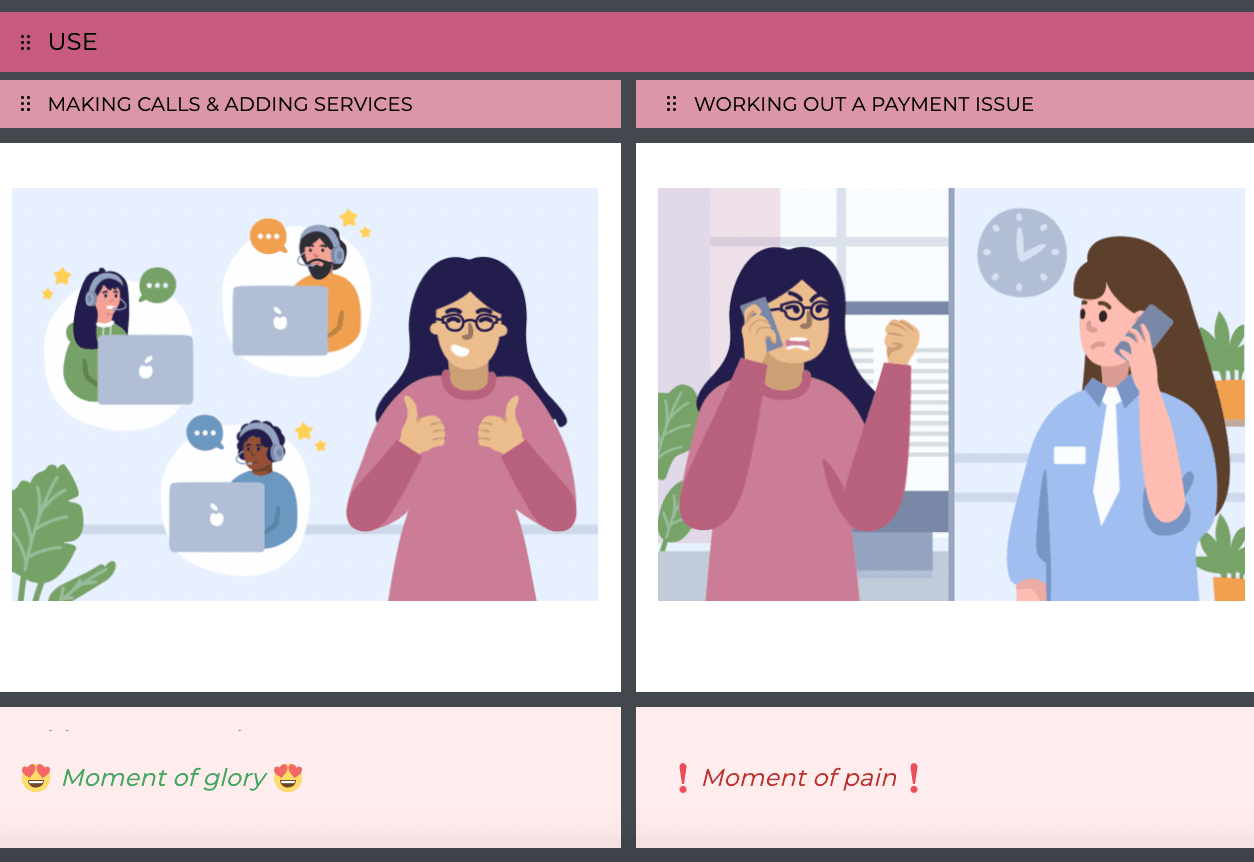
By adding a specific channel icon
Add a new Channels section:
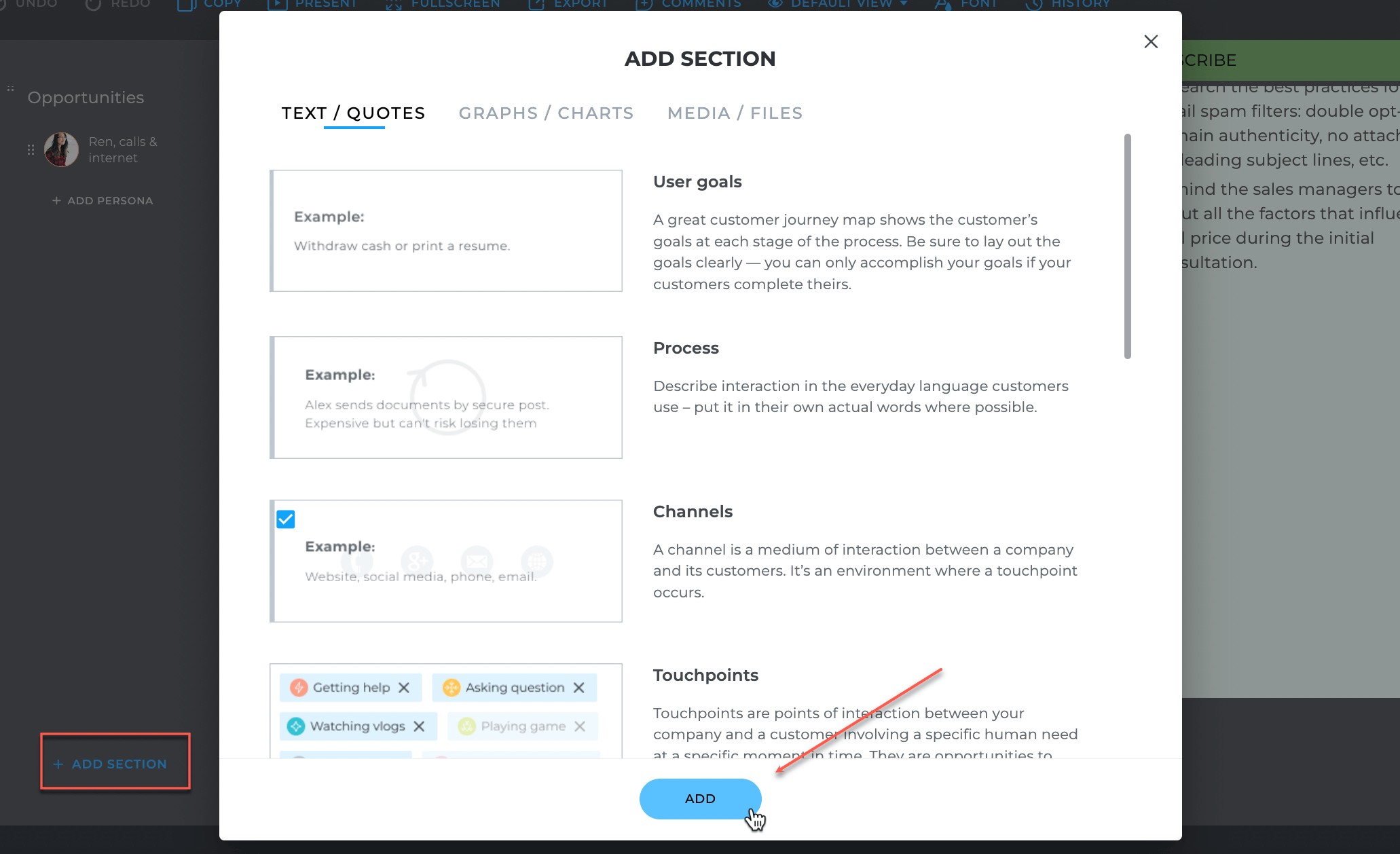
Mark moments of truth with your own custom channel icons or use the ‘Star’ icon from the default icon set. Delete the empty tiles that do not contain any moments of glory or pain. The end result would look something like this:

By tweaking the experience graph
Add an Experience section:
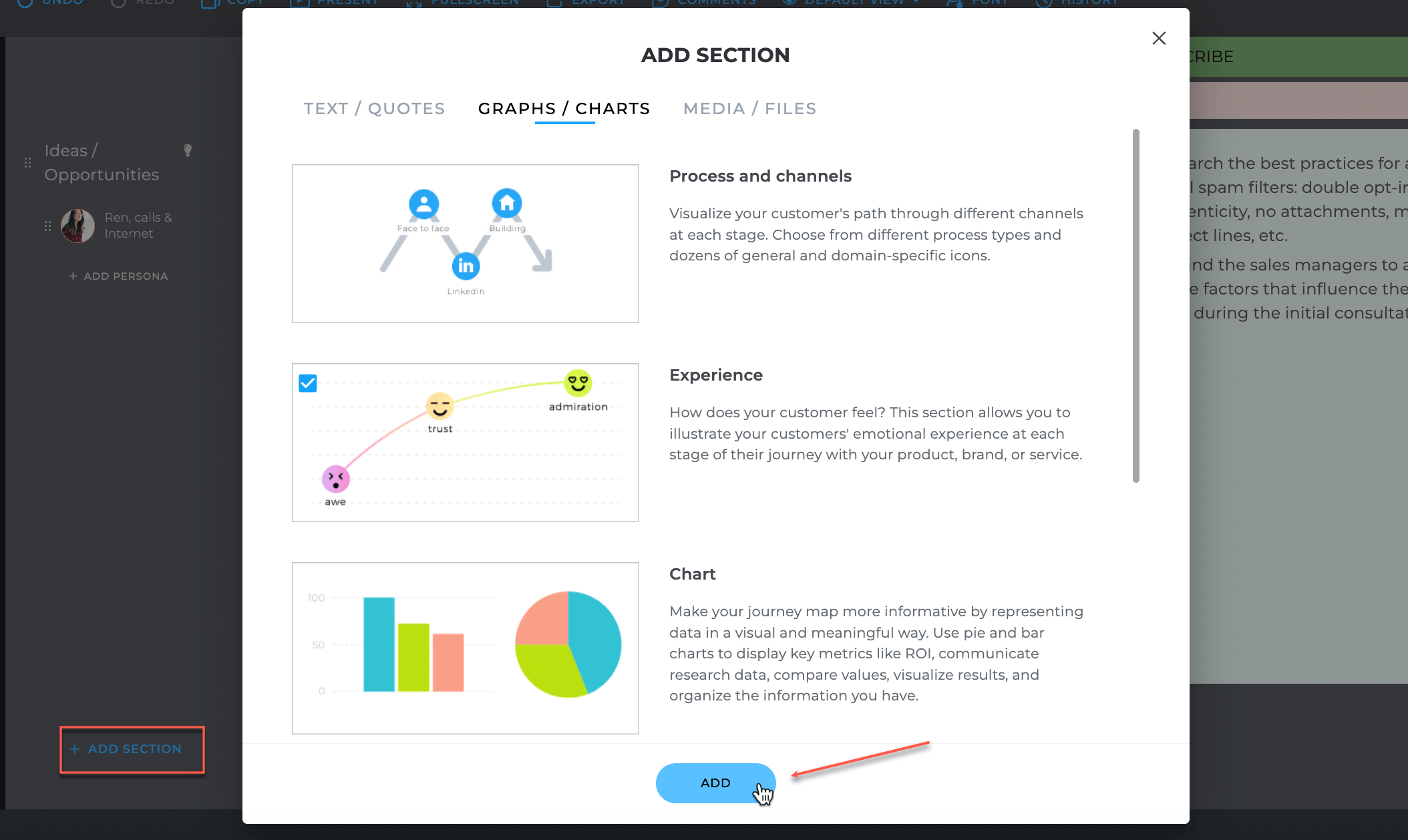
There’s room for creativity when working with the graph to highlight moments of pain and moments of glory. One way to do it could be to keep the emotions that the customer is going through while using the text sections where customer quotes usually go to spell out the moments of truth:
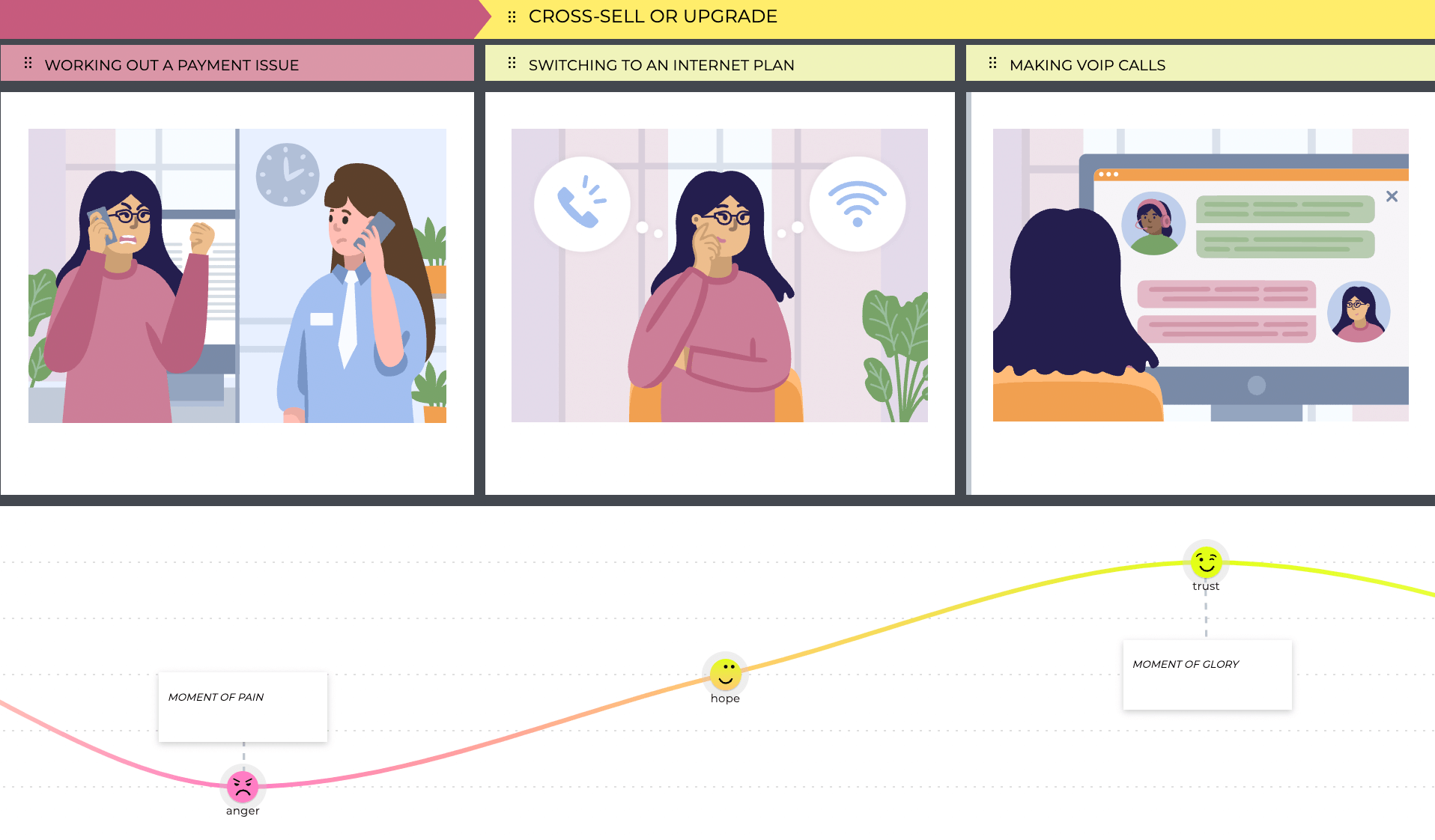
With touchpoints
Lastly, a dedicated touchpoint section helps display moments of truth on the journey maps, with each touchpoint featuring a visual tag:
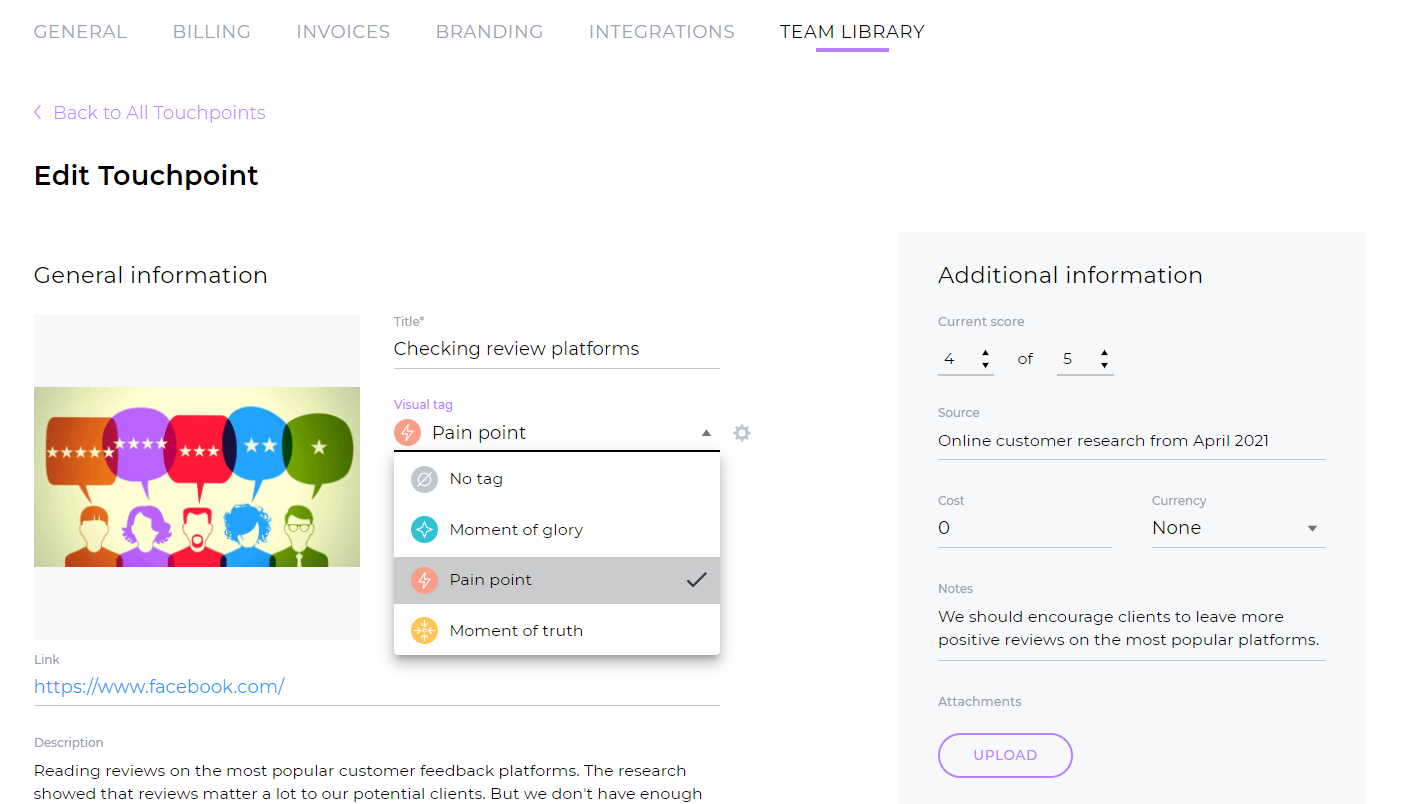
Okay, after you add touchpoints to the map itself, you’ll be able to tell apart moments of pain, moments of glory, or simply moments of truth in general:
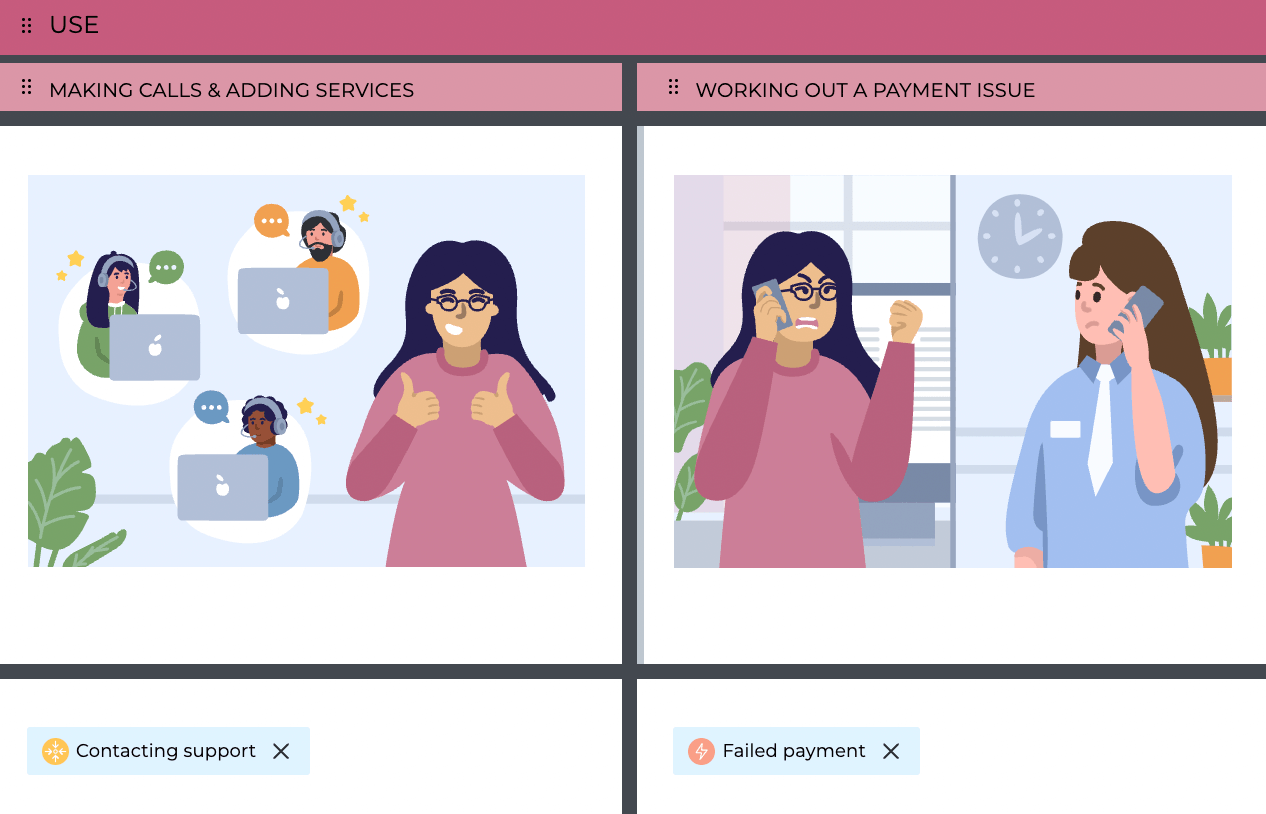
On the left-side panel, where personas and touchpoints are displayed, you can also filter by touchpoint category:
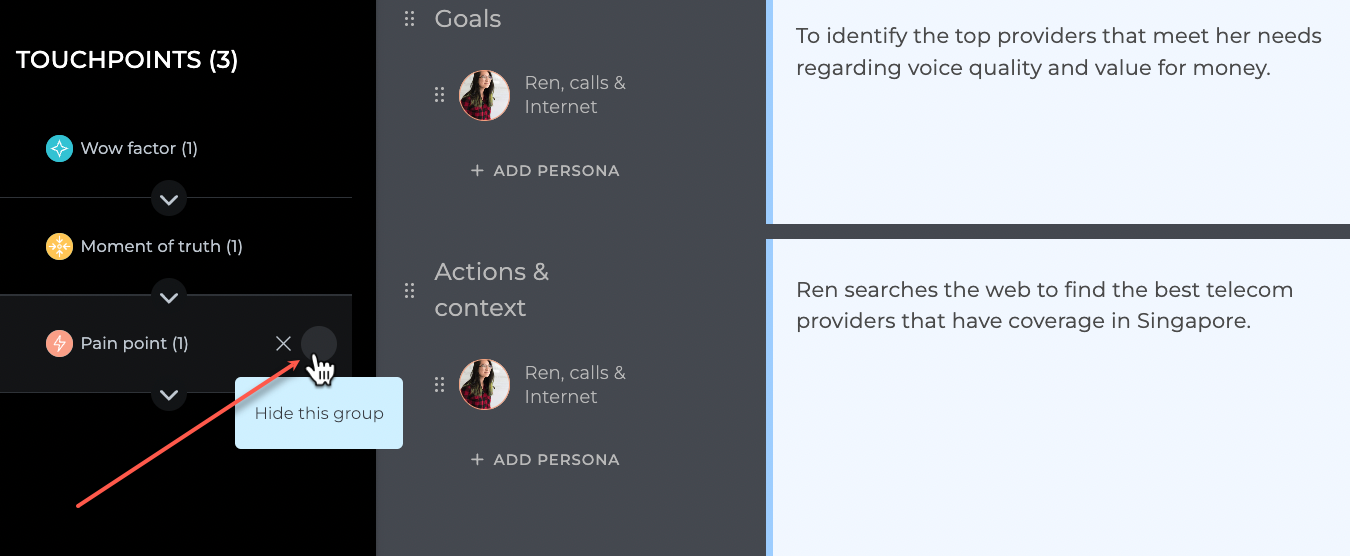
Wrapping up
Moments of truth are the most memorable parts of a customer’s journey. Positive instances are called moments of glory, while negative encounters are moments of pain. To recognize and track them for multiple personas, you’ll need to assess what your customers expect before the experience and what they’re saying, thinking, and feeling during and after it happens.
Considering an end-to-end journey is essential since moments of truth can happen at any stage. Moments of truth significantly impact the overall business image and, consequently, on retention and revenue. Work on eliminating major pain points and replacing those with enough glorious occurrences to retain more customers and turn them into happy brand ambassadors.
Key takeaways
- Moments of truth are pivotal touchpoints in the customer journey where a key event shapes the customer's perception of the brand. These moments can make or break customer loyalty, leading to long-term retention or churn.
- Moments of glory exceed customer expectations and foster positive brand experiences, while moments of pain highlight service or product delivery failures, potentially leading to dissatisfaction.
- Identifying and addressing these moments can help companies improve customer satisfaction, loyalty, and revenue, while also aiding in standing out from competitors.
- Analyze customer feedback, engage with customer-facing teams, and review competitor experiences. Leverage tools like customer journey maps to spotlight key moments of glory and pain.
- Track and enhance moments of truth in the customer journey to fix weaknesses, replicate successful moments, and create stronger brand experiences that leave a lasting impression.






Used this info for a workshop on moments of truth in customer journeys. We have been getting low ratings, but only have resources to improve one stage at a time. Now we have goals set to fix our worst moment of pain.
I own a small coffee point, and we do a similar practice during regular staff meetings. We look at online reviews and note the positives and negatives that customers share. Then it’s reinforce the positive, eliminate the negative. Say, we had instances where baristas mixed up regular and plant-based milk, which was a big no-no, so we started storing them on separate shelves. Now I know that’s called looking for moments of truth in customer journey 🙂
Grear example and insights!